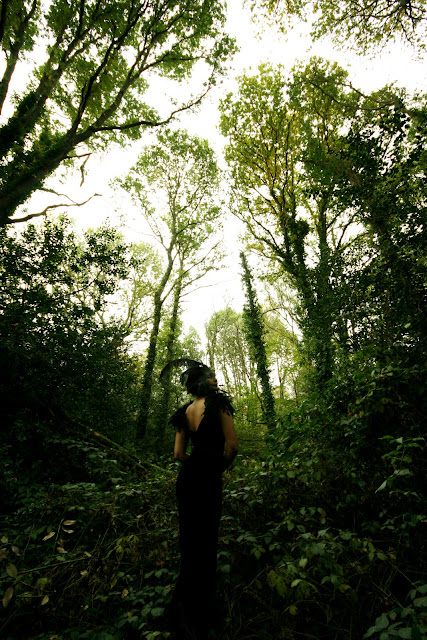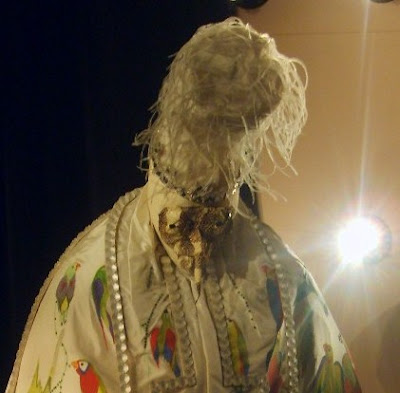There are a limitless amount of ideas that influence jewellery design, one of the more controversial is taxidermy. Usually, designers or artists use small amounts of animal parts, like teeth or a few bones, but others go to the length of hollowing out a whole animal as shown below. This may not be jewellery but it's still a good example of a taxidermy accessory, I can't remember where I found the image though.
Shown above is a set of snake vertebrae bracelets designed by Shannon Astali DeJong. This item shows a slightly more subtle side to taxidermy jewellery, although there is still something eerie about it. Personally, I wouldn't wear these but would consider a fake version as I love the animal influence yet wouldn't want to wear the real thing. Posted below are a pair of squirrel paw earrings from Etsy and a duck headpiece, the origin of which I do not know. I think there is something sickeningly beautiful and compelling about these items and it makes me want to see more, though feeling guilty for doing so. Whereas the earrings are for sale, the duck headpiece seems to be from a shoot of some kind so that raises the question, was there any point in decapitating a bunch of taxidermy ducks? Perhaps it's just for the sake of controversy.
The work of the appropriately named artist Julia deVille ranks arguably at the top of controversial jewellery design. The majority of the animals used in her work are of the most defenceless variety, using field mice, small birds and even kittens. Whilst some of her jewellery designs are metal replicas of animal parts, deVille doesn't shy away from using the real thing, as can be seen below.
Fortunately, to combat and contrast with the morbid styles of the above designers, Hafsteinn Juliusson and Paula Hayes have each created a different form of living jewellery. The first is part of a series of necklaces designed by Hayes and below is one of many rings by Juliusson.
Whilst most people are unlikely to have a problem with those who choose to wear a ring filled with grass, I'm sure opinions would change when animals creep back into the mix. In Chengdu, China, there was news of teenagers of wearing living fish, encased in plastic pendants and apparently they last 3 months.




























































